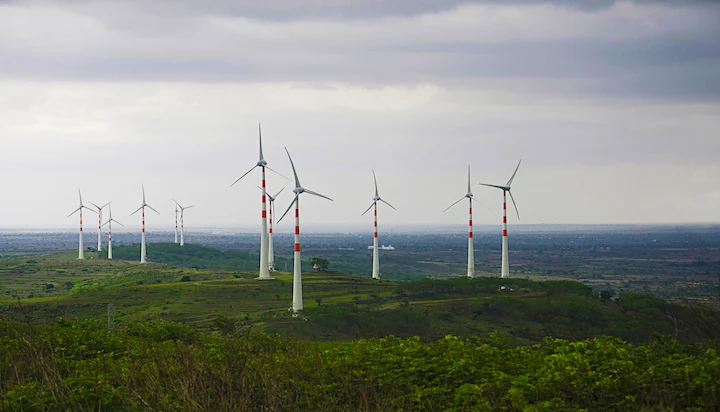Today India has leapfrogged onto the digital transformation journey with intense smartphone penetration across both its urban and the rural landscape. The near negligible cost of the internet has further accelerated digital adoption resulting in 504 million active internet users in the country. On top of this, digital growth engine is a smoothened commerce ecosystem fueled by the government-led Unified Payments Interface (UPI) and fintech firms, which have been instrumental in creating more business opportunities across the nation’s uniquely diverse socio-economic pyramid. Today, in a mobile-first nation like India, every mobile number is practically equivalent to a bank account. So, when a billion-plus people transact within this ecosystem, it provides definitive tailwinds to make business happen. This has resulted in India undoubtedly putting itself on a trajectory towards becoming a behemoth of data, which needs to be captured and analyzed.
A decade from now when we assess the planning that went into managing this journey in the right manner, we need to have some good answers. But before that, seated at the cusp of this parabolic shift of creating a historic magnitude of data, India needs to ask some important questions. First, are we prepared to host such massive data generation, which is not for a company, not for a group or a conglomerate, but for a nation? And second, while companies and banks decide their own data centre strategies, who is deciding the nation’s data centre strategy?
Green data centres are mandatory
Data centres need a whole lot of uninterrupted power supply. In a power frugal country like India, problems such as air pollution caused due to excessive use of coal and other fossil fuels to generate electricity, cannot be overlooked. Deemed as the backbone of the country’s commerce engine, the question is how will green data centres be powered up for effective storage, processing, and analysis? Here, if we are not thinking green or thinking Renewable Energy (RE), then we are thinking small and not thinking in the right direction.
Green data centres cannot be just good to have wishful concepts, but a must to have and mandatory requirement for businesses. Failing to do so means we are building our digital foundation on a wrong trajectory. We risk leaving a society which is absolutely polluted and devoid of its natural resources, thereby penalizing our future generations. As the world’s 5th largest energy economy which is running the world’s largest clean energy programme of achieving an installed Renewable Energy capacity of 175 GW by 2022, India has already made headway into expanding its alternative energy sources such as solar and wind. Moreover, the share of solar energy in the country’s installed power capacity has recently risen to 10.7 per cent. This existing infrastructure and expertise can be deployed to building green data centres.
Furthermore, setting accreditation standards to introduce energy efficiency in data centre projects will help ensure reliability and efficiency in deployment.
How Indian conglomerates are paving the way for Green Data Centres
Observing the economy from the closest quarters and with an aim to reduce their carbon footprint, many top Indian companies are making the most of the green data centre trend. Several telcos in the country have announced big ticket projects to this effect. For example, a leading teleservices and internet provider has invested Rs 1,000 crore in a state-of-the-art greenfield data centre in Kolkata’s upcoming 100-acre IT hub that will be the biggest in the state. Another promising example is that of a digital communications solution’s provider, which plans to source power from a 14 MW captive solar project to meet the energy requirements of its core and edge data centers in Uttar Pradesh.
Furthermore, one of India’s leading conglomerates has entered into two key joint ventures to diversify into the green data centre market, thus tapping into the country’s digital economy, which is expected to touch $1 trillion by 2025. While one of the projects aims to develop 1 gigawatt (GW) of data centre capacity over the next decade, the other JV is to build data center parks of up to 5 GW capacities using 100 percent RE over the next 20 years.
This project pipeline bodes well with findings of NASSCOM’s report “India – The Next Datacentres Hub”. The country’s data centre market investments are expected to grow at a CAGR of 5% (~2X of the global market) to reach $4.6 billion per annum by 2025. The report goes on to indicate that India is well positioned to garner a larger share of global data centre investments. While several factors such as a growing online market and international connectivity, ample engineering workforce, work in India’s favor; to garner a larger share of the global investments pie, it needs to capitalize on the key trends shaping the datacenter market.
Driving India into the green data led future
India’s successful digital payment ecosystem driven by government initiatives has changed the way commerce happens in the country. The success earned in this space needs to be mirrored in the green data centre market, as well.
The revolutionary changes that green data centres will bring to the country’s digital transformation journey could be of a much bigger magnitude. Given India solves the scale problem in the most innovative way, the manner in which we adapt and embrace these centers will become an example for the rest of the world. However, what bold bets we can take in the future, will be based entirely on how well we are prepared to support it now. Though the investments may look risky today, it is the single biggest metric to determine our readiness. If we place the first few bricks right, then we are on for something bigger or else India’s growth story will remain organic and slow.
Most importantly, let’s not forget that the cloud is not just machines running on green energy but providing solutions to businesses, which will be the next steppingstone of India’s digital transformation journey.
Source-timesofindia.indiatimes.com









